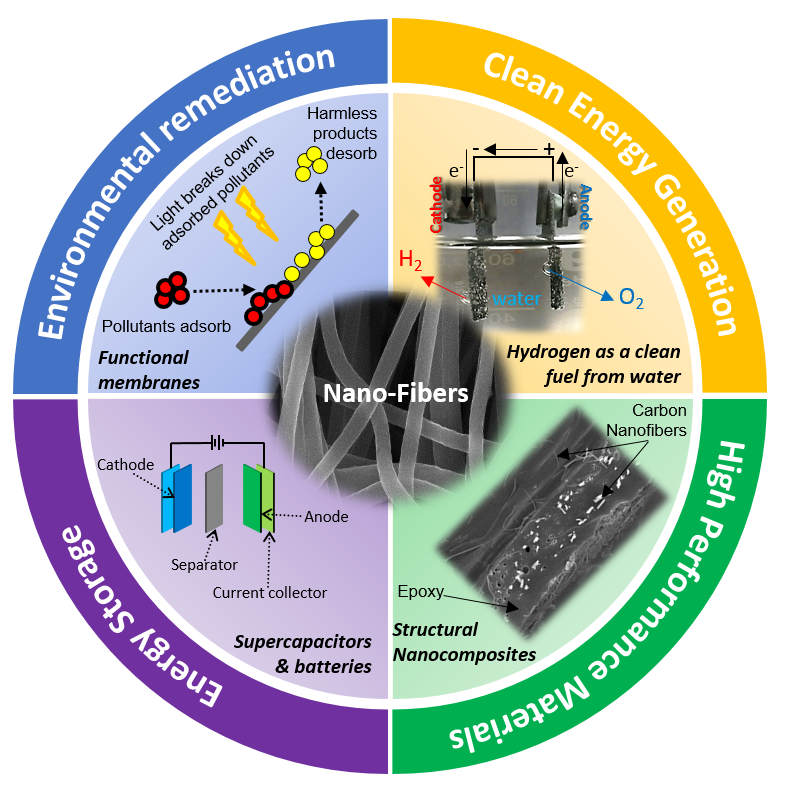Fiber from a geometrical perspective a fiber is a thin and elongated structure made of any material. Nature uses it for various applications e.g. plant fibers which are thick-walled cells act as support to provide strength to the plant tissues, extra-cellular matrix of the connective tissue uses a network of various protein fibers to regulate the cellular functions, and dietary fiber which primarily consist of polysaccharides such as cellulose helps in muscle movements in the intestine. Textiles use both natural and synthetic fibers such as cotton and nylon, respectively, which can be spun into woven forms whereas glass and carbon fiber reinforced plastics are widely used in structural applications.
Nanoscience offers unique opportunities to develop material combinations which can bypass traditional material performance trade-offs. At nano length scales, the fundamental material properties can change and the significantly higher interfacial area between the constituents control the overall performance.

Nanofibers, with diameter thousand times smaller than a human hair, are being extensively investigated, for example, in nano-bioengineering field for their use as fibrous network in tissue engineering scaffolds and in nanomechanics field to study their potentially superior mechanical properties.
Our research group focuses on the synthesis of nanofibers with additional functionalities to address some of the key challenges in environmental remediation and energy. Moreover, we are also working on using these nanofibers in structural composite materials for high load and impact bearing properties.
